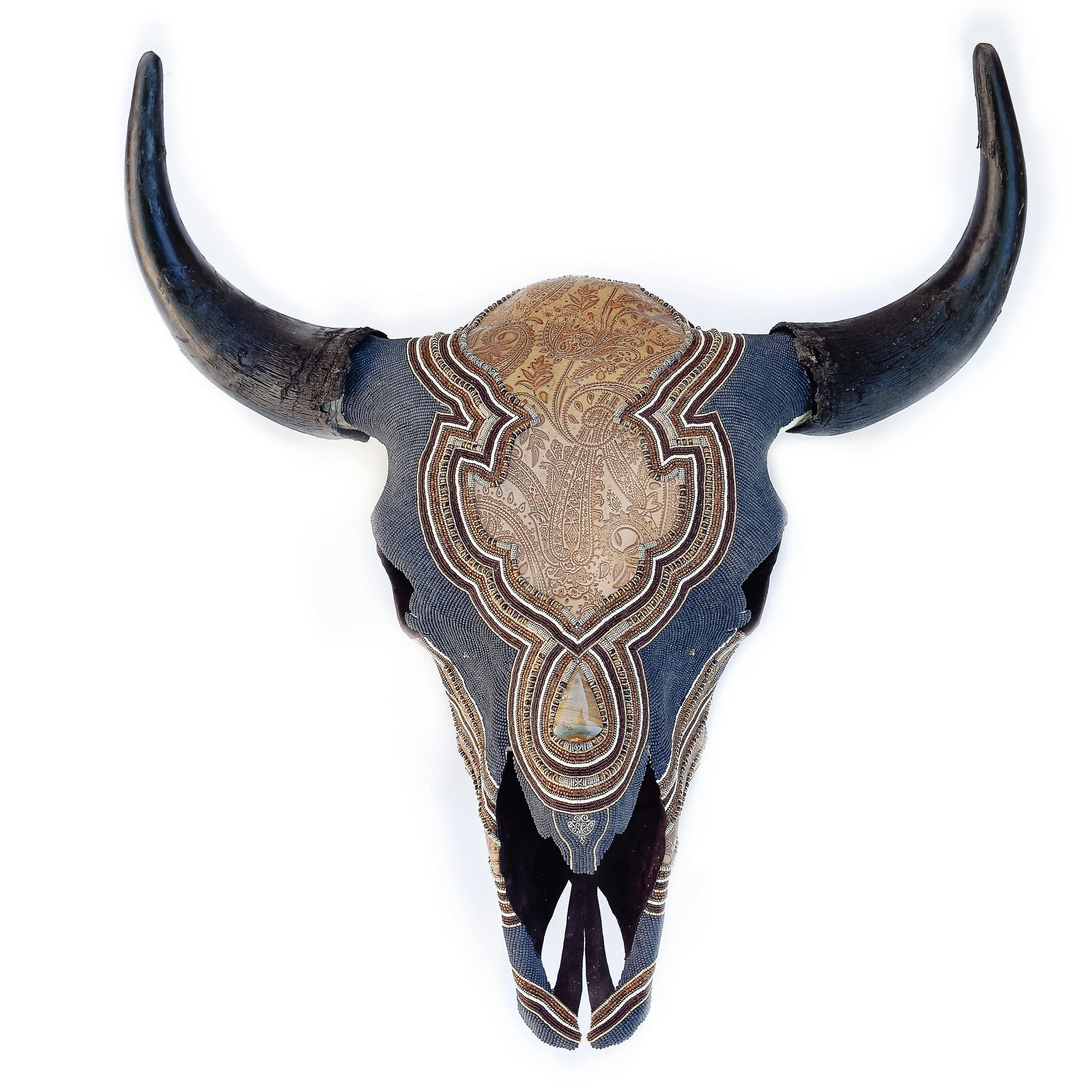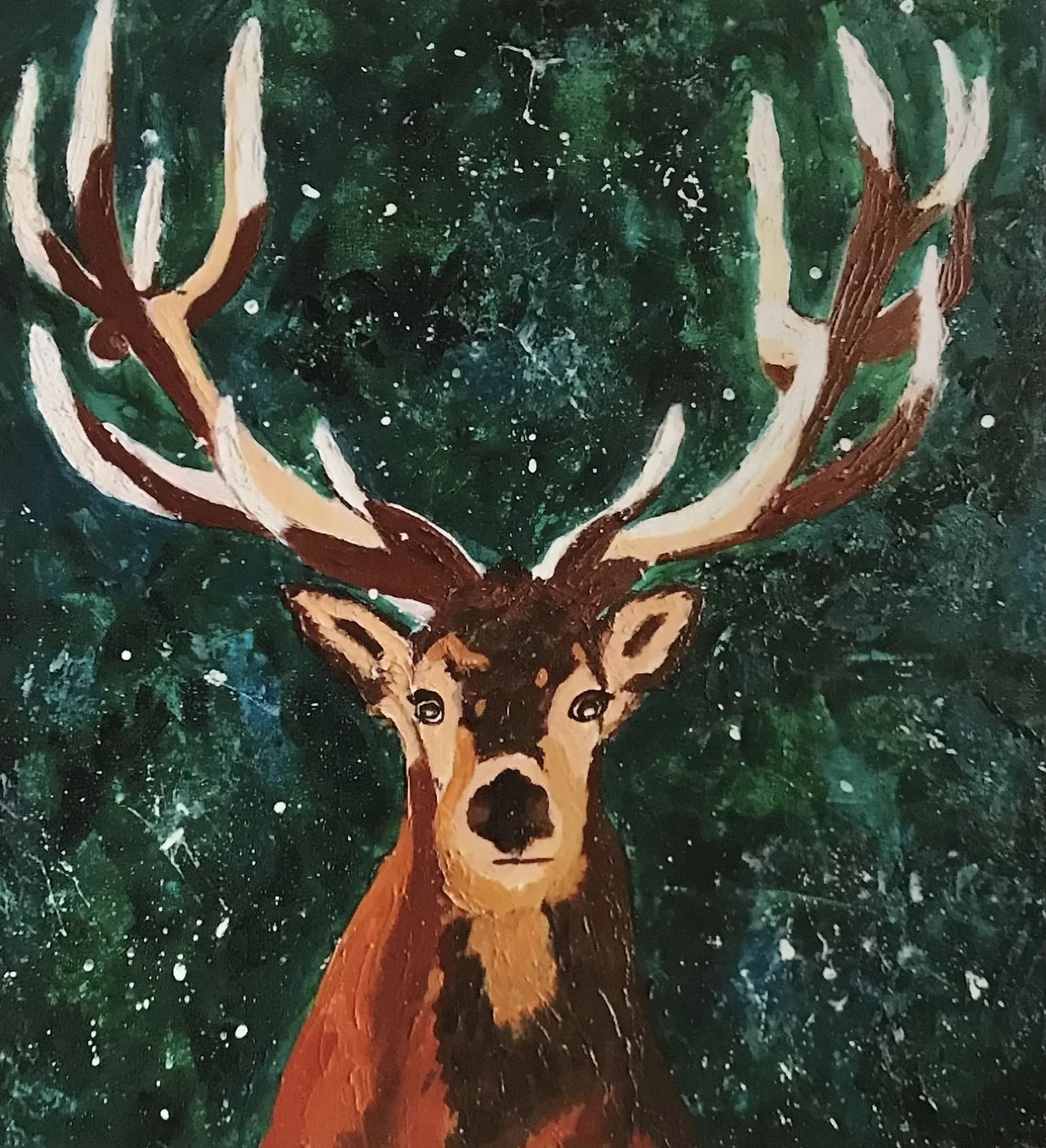Undoubtedly living in such a magical city full of artistic heritage awakens the aesthetic sense of any sensitive person. It is a magical city for its light, its magic, its heritage and uniqueness. On the other hand, two cultural traditions coexist, the Christian and the Muslim Andalusian. One is abstract and the other has a figurative tradition that begins in the Renaissance, when the city keeps great artistic treasures that surround it with a mystical and unreal beauty. My work has also evolved from figuration to abstraction, although my abstraction is not geometric but organic, it does carry the concept of module, repetition and texture in several of my assemblages, this concept of module is noticeable in others, the organic predominates.
Interview with Huub Ragas
I guess I was always interested on how society expresses the thoughts and ideas of their era in the way it shapes the urban environment, in architecture and landscaping. At times houses in my paintings are sort of a metaphor for the unique identity of each of us, maybe different in colour of detail but always recognizable as a house, as a place to live with unique colours. At times my paintings reflect on history. For instance in recent paintings with the theme of the terraced houses of dutch cities. But mostly I paint projecting my own ideas.
Ivan Kanchev
Ivan Kanchev, a Bulgarian artist and ceramist, delves into the profound with his latest series, "Man, where are you?" Kanchev’s work stands as a beacon of reflective commentary, scrutinizing the ecological, social, and political crises suffusing our contemporary existence. His oeuvre is a contemplative journey, not only showcasing artistry and skill but also inviting onlookers to a dialogue with the present day’s most pressing issues.
Lynn Letourneau
The art of Lynn Letourneau reminds us that in abstraction, there is a profound sense of discovery. Each viewer may interpret her canvases differently, finding unique meaning and solace within the layers of paint. Her works serve not only as a reflection of her own artistic quest but also as a map for viewers to embark on their own journeys of introspection and healing. They are a testament to the power of art to connect us to the deepest parts of ourselves and to each other, bridging the great divides we perceive in our lives and our spirits.
Klaus Biliczky
In the realm of abstract art, each canvas serves not just as a window into the artist's soul, but also as a mirror reflecting the personal experiences and interpretations of the observer. Klaus Biliczky, through his abstract paintings, orchestrates a symphony of emotions and thoughts, drawing us into a vortex of contemplation and imagination. Biliczky’s artistry is akin to a philosophical query into the nature of reality, prompting a search for hidden meanings and evoking a sense of life’s philosophy within each stroke and hue.
France Malo
France Malo's artworks exude an unmistakable life energy and dynamics that engage the viewer in a deep and profound experience. Her canvases, vivid with movement and rich with textural complexity, speak to a certain kind of life philosophy that values vibrancy, change, and the power of nature.
Ali Rouse
Ali Rouse's artistic creations are a profound reflection on the concepts of animism, shamanism, and the eternal cycle of life, death, and rebirth. Her work presents an awe-inspiring symbiosis between animal remains and ornate craftsmanship, giving new life to what was once part of the wild. Each piece is a tribute to the spirit of the animal and the materials sourced from nature, interweaving them into a complex narrative of existence, transformation, and permanence.
Aurelio Gaiga
Aurelio Gaiga's latest painting collection, as evidenced by the provided artworks, embodies a profound and timely commentary on the intersection of humanity with burgeoning technology. The series, initiated in 2018, appears to dissect and examine the omnipresent role of technology in contemporary life and its implications for our collective memory, cultural heritage, and individual identities.
Interview with Aomi Kikuchi
Through my artwork, I convey that compassion is a meaningful solution to alleviating cravings. I focus on personal desires and suffering, and on people and things that are forced to suffer in order to satisfy the greed of others. Fear and disgust are also causes of suffering. I work to help people let go of negative emotions by finding new perspectives and turning negative emotions into positive ones.
Interview with Roswitha Langemeier
All my life I had been feeling that I had to express something, that this craving for art was always in me. I read a lot about art and art history and I was fascinated by impressionism with his color, light and a lot of mood. I was thrilled by the lightness and atmosphere. But the urge to paint really rolled over and splashed out when I was studying business administration. I needed a balance to this theoretical subject with its dry material.
Kari Veastad
Kari Veastad's paintings are a harmonious blend of abstract expressionism and conceptual mindfulness, her work is a testament to the transformative power of art. With a palette that ranges from the deeply serene to the vibrantly chaotic, Veastad's canvases are emotional landscapes that invite introspection and contemplation.
Angela Keller
Angela Keller's oeuvre is an enchanting amalgamation of dreams and reality, where the whimsical and the profound dance in a harmonious symphony. Her paintings are not merely visual experiences but cerebral explorations that tug at the strings of perception, challenging the viewer to reconsider the boundaries of what is real and what is imagined.
Lincoln Howard
Howard's technique of incorporating a special paste to create depth and texture further differentiates his work from his contemporaries. This not only adds a sculptural quality to the paintings, inviting the viewer to experience the work through multiple senses, but it also enhances the metaphorical depth of his art. The textured surfaces evoke the tangible realities of life's experiences, the scars, and embellishments that time etches upon the world and the self.
Interview with Marianne De Roo
Your work often explores the concepts of absence, balance, and discrepancy. Could you elaborate on how these elements manifest in your art and why they hold such significance for you?
Absence creates a tension which creates interest. The key is to paint a portrait that startles you. You want to keep looking at that face, and you wonder who it is. Where does that person come from ? What are they thinking ? The title doesn’t give away much. The facial expression could be understood in a myriad ways. This is what I call absence. I prefer not to reveal too much, leaving room for interpretation - even though portraiture is at the core of figurative painting.
Frank Hoeffler
Frank Hoeffler’s collection of paintings is a mesmerizing array of canvases that resonate with a deep appreciation for the beauty found in everyday life. Each piece is an embodiment of the artist's ability to transform the mundane into the sublime, crafting scenes that pulse with romance and a serene beauty that invites contemplation.
Thorsten Boehm
Thorsten Boehm's artwork emerges as a profound interrogation of the human condition, juxtaposing the innocence and darkness that intertwine within the depths of cultural lore and personal belief. Boehm's works are a striking tapestry of mythical, fairy tale, and religious motifs that transcend the boundaries of time and culture to reflect a shared human experience.
Michael Mutschler
Michael Mutschler's oeuvre represents a profound exploration of the human condition through the lenses of Surrealism and Expressionism, intertwining self-expression with a palpable representation of emotional moods and emotions. His paintings, rich with symbolic complexity, invite viewers into a world that oscillates between the dreamlike realms of the subconscious and the visceral reality of human experiences.
Fran Johnson
Johnson's paintings are a testament to the enduring significance of abstraction in art. They could be likened to short movies; not the kind with a linear narrative, but rather, those that evoke a myriad of interpretations with each viewing. Her work demands an active viewer, one whose imagination is set alight, seeing different shapes and narratives emerge and recede like tides within the boundaries of her canvas. In "Fading Flowers," for instance, one can see the delicate dance of decay and rebirth, a motif that is at once universal and deeply personal.
Interview with Felix Kindelán
My works are like diary entries. I use them to process current or past events from my life. Even for me, it's not always immediately clear what exactly the works are about. Sometimes I work specifically on an emotional issue or let myself be guided spontaneously to the composition. My own interpretation of a work can therefore change over time. "Life is lived forwards and understood backwards," said the Danish philosopher Søren Kierkegaard. I agree with that. That's why I think it's even necessary for viewers to make their own interpretations of the works in order to trigger as many thought processes as possible in all directions.
Interview with KIM HYE JI
Within the perception of my artwork, I believe that it works in very much the same way to more than just one moment that we could experience on a daily basis. Each day, newly created and formed moments give us art pieces if we are willing to grasp them from our daily lives.



















